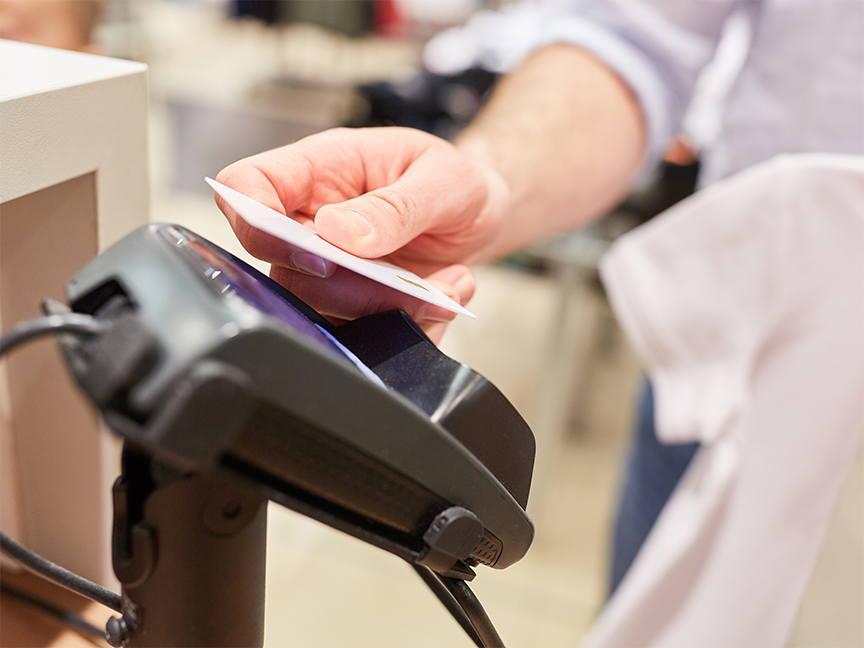
Visit Our Sponsors |
|
|
|
|
|
|
|
|
|
|
|
|
|
|
|
|
|
|
|
|
|
|
|
|
|
|
|
|
|
|
|
|
|
|
|
|
|
|

It’s a given that the COVID-19 pandemic boosted e-commerce, but some of the numbers coming in now are verging on the exceptional.
Figures issued in 2021 by the U.S. Department of Commerce show an increase of 19% in worldwide e-commerce revenue between pre-and-post COVID-19 timeframes in 2020. Statista.com in December 2021 estimated that the pandemic prompted an overall rise in the share of online sales by 6% during this time, rising to 22% in the U.S. and an astonishing 31.3% in the U.K.
“COVID-19 has accelerated the adoption of e-commerce by five, maybe 10 years,” says Jeff Pielusko, director at Carl Marks Advisors, the New York-based merchant banking firm.
Meanwhile, it’s not surprising that we’ve seen an increase in “mall deaths,” as 75% of Americans tried a new shopping behavior during the pandemic. Arguably, there was always a correction coming. Prior to the pandemic, America had an average of 23.5 to 46.6 square feet of retail space per person, according to The Berkeley Economic Review; the most of any other country, 10 times more than Germany or Mexico, and 40% more than Canada.
But that doesn’t mean brick-and-mortar retail outlets are doomed. And it’s not yet clear what will be the impact on the irreducibly physical part of the supply chain — the behind-the-scenes activities of fulfilment and distribution.
There’s been a movement for some time to fundamentally alter the experience that consumers have in physical stores. For example, casual clothing retailer Bonobos opened its first Guideshops in 2013. There, shoppers can try on clothes and get guidance from salespeople, but can’t leave the store with their goods. Instead, they order what they want online from the store, and receive those items within one or two days at no extra charge. It was a huge bet by Bonobos, nearly a decade ago, but it’s paid off with lower inventory and distribution costs. Nordstrom Locals have followed suit, and the trend in so-called Zero Inventory Stores seems set to gallop ahead.
Retailers understand the importance to consumers of presenting a coherent brand experience, with online and in-person shopping combined. For years, if shoppers bought something online, they couldn’t return it to the same retailer’s store. Online and in-person shopping appeared to exist on parallel planes of reality, not unlike the way TVs and computers didn’t “talk” to one another. Now, with the advent of “smart” TVs, it’s far easier to return an item, and not just to retailers who have brick-and-mortar outlets. Amazon has allowed the return of purchases made at Kohl’s stores since 2019. (For its part, Kohl’s gains foot traffic, and issues a discount coupon for in-store purchases when the shopper hands in the return.)
“Retail stores are now more than places to go shop,” says Pielusko. “They’re used for fulfilment and marketing.” He says it’s natural for retail stores to take on the role of facilitating returns of products bought online, too. “People don’t want to wait on line at FedEx. Or they want to order it online and pick it up in store. For a lot of retailers, they’ve got the footprint down to a level that they think they can sustain. Now, they’re asking: How do we maximize use of this space? How do we turn that footprint into a place for people to buy, try things on, make returns? Retailers want to make it as easy as they can for customers.”
Brick-and-mortar stores aren’t going away, but they’ll continue to change. “Will stores where you can’t walk out with anything become the norm?” asks Pielusko. “I think there will be a delicate balance. There’s a continually evolving relationship between brick-and-mortar and e-commerce, rather than this idea that they’re two competing business segments.”
Successful retailers already understood this, but COVID-19 has accelerated the realization among laggards. Pielusko says he’s seen several retailers respond to a pandemic-driven spike in demand by implementing sophisticated inventory management and fulfillment technology, and upgrading websites to better serve today’s consumer. “In many cases, it’s something they should have done and needed to do, but their hand was forced when they had to shut down stores and there was increased demand for their products.”
Although the COVID-19 pandemic was a unique event, it has highlighted the existing underlying need for greater supply chain efficiency. “Retailers were always looking for the next trend, but not necessarily making the foundational changes needed in business,” Pielusko says. “What we’re seeing in the supply chain now is rising costs. Many retailers are not used to operating in this environment where they have to be as efficient as possible.”
Some rationalization of SKUs is a possibility, Pielusko adds. One obvious way to keep inventory carrying and fulfilment costs down is simply to have fewer products. “Some companies moving toward focusing on their most profitable and most efficient products,” Pielusko says, citing the benefits of being able to consolidate the supplier base, increase in-stock levels and reduce inventory. “Retailers are adapting again.”
RELATED CONTENT
RELATED VIDEOS
Timely, incisive articles delivered directly to your inbox.






